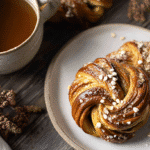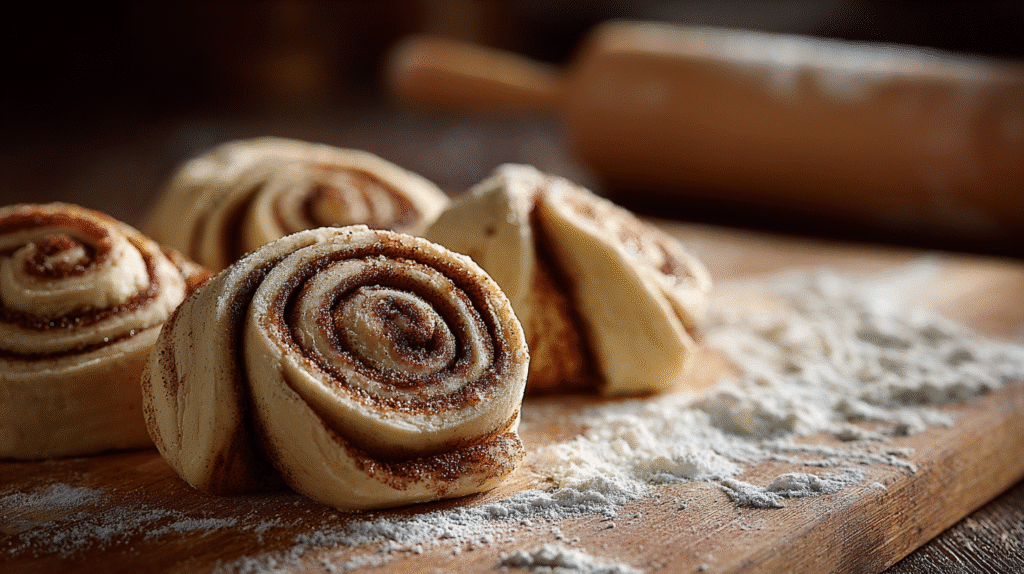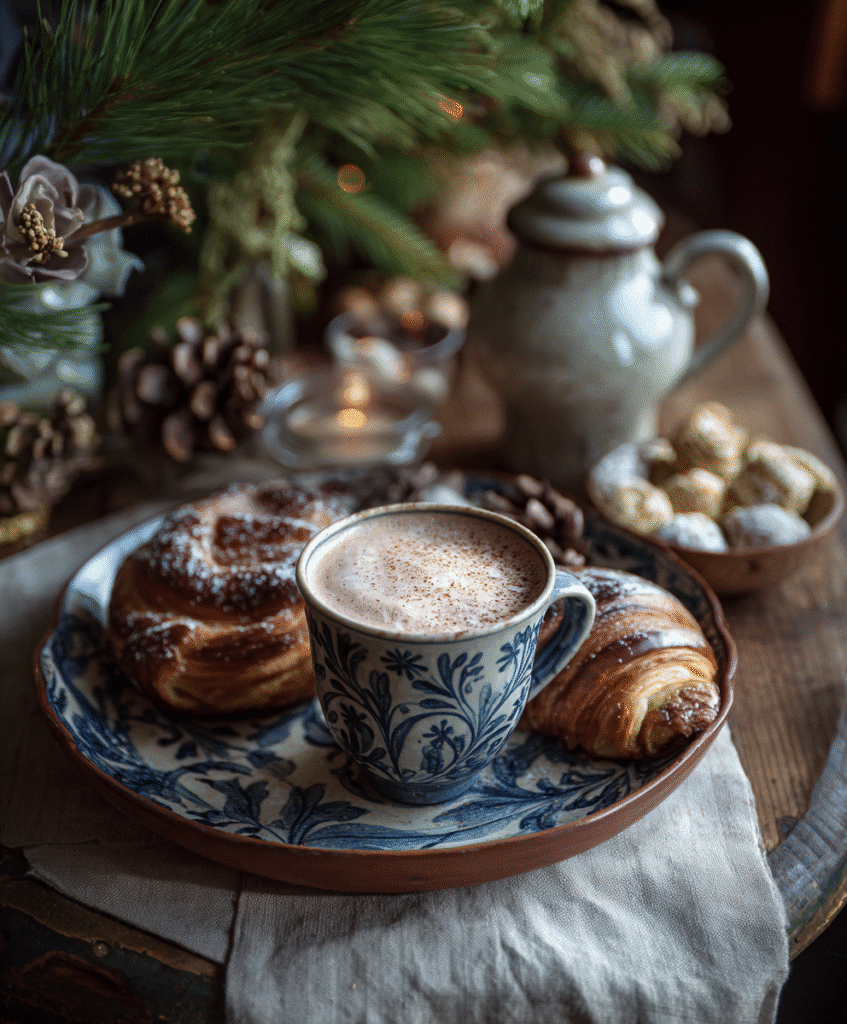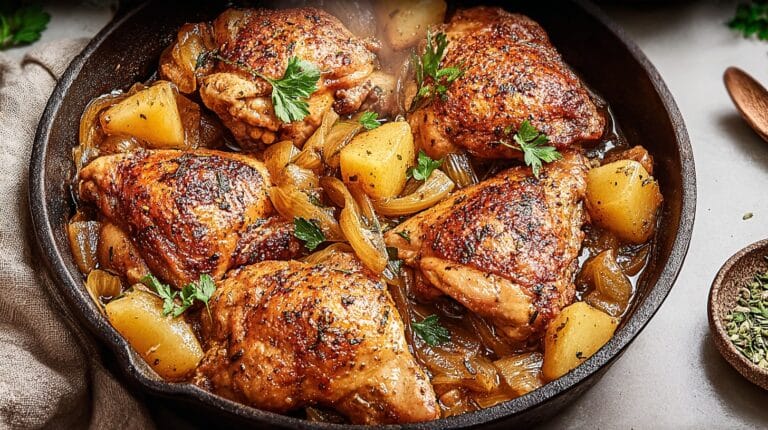What if a simple coffee break could change your entire day? That’s exactly what Swedish fika recipes offer—a warm, comforting pause from the everyday hustle. In Sweden, fika isn’t just about sipping coffee. It’s a beloved ritual—a scheduled moment to slow down, share something sweet, and reconnect with yourself or loved ones. Whether you’re new to this tradition or craving an authentic taste of Scandinavia, this guide delivers the best Swedish fika recipes that you can easily make at home.

From soft cinnamon buns to gooey chocolate cake, you’ll discover the heart of fika culture in these time-honored bakes. But fika goes beyond sugar and spice. It’s about warmth, ritual, and presence. In this article, we’ll cover not just how to bake, but how to live fika—making every pause a little more meaningful.
Print
Swedish Fika Recipes: 10 Classic Treats for a Cozy Coffee Break
- Total Time: 55 mins
- Yield: 10 servings
- Diet: Vegetarian
Description
A collection of traditional Swedish fika recipes, from cinnamon buns to chocolate balls—perfect for a cozy coffee break.
Ingredients
Flour
Yeast
Butter
Cardamom
Cinnamon
Sugar
Milk
Eggs
Raspberry jam
Oats
Cocoa powder
Instructions
1. Prepare yeast dough and let rise
2. Roll out dough and spread cinnamon filling
3. Slice, shape, and bake kanelbullar
4. Mix and bake kladdkaka in greased pan
5. Stir and roll chokladbollar, then chill
6. Mix and bake kardemummakaka
7. Shape thumbprints and fill with jam for hallongrottor
Notes
Serve warm with coffee or tea
Freeze extras for quick weekday fika
Try adding pearl sugar for authentic texture
- Prep Time: 30 mins
- Cook Time: 25 mins
- Category: Dessert
- Method: Baking
- Cuisine: Swedish
Nutrition
- Serving Size: 1 bun or slice
- Calories: 240
- Sugar: 12g
- Sodium: 180mg
- Fat: 10g
- Saturated Fat: 6g
- Unsaturated Fat: 3g
- Trans Fat: 0g
- Carbohydrates: 32g
- Fiber: 1g
- Protein: 4g
- Cholesterol: 45mg
Keywords: swedish fika recipes, fika snacks, cinnamon buns, kladdkaka
Let’s begin where all cozy kitchens should—with a good story and a swirl of cinnamon.
A Personal Memory Wrapped in Cinnamon
As a child, the sound of clinking mugs and the scent of freshly baked pastries meant one thing: it was coffee time in Grandma’s kitchen. She didn’t call it fika, but that’s exactly what it was—a pause in the day with warm drinks, softer voices, and slices of something sweet on chipped ceramic plates.
Years later, when I discovered the word “fika,” I realized I’d been practicing it all along. It’s the art of pausing with purpose, and Swedish fika recipes embody that with their homey flavors and heartfelt tradition. In Sweden, fika is a sacred ritual. Whether at home, in the workplace, or at school, everyone makes time to gather, pour a cup, and share a treat.
What Is Fika, Really?
Fika is more than a coffee break—it’s a cultural cornerstone. Rooted in the Swedish word « kaffi » (coffee), the term grew into a full-blown tradition by the late 1800s. It became especially prominent in “kafferep,” or women’s coffee gatherings, where friends would meet to share stories and homemade fikabröd (coffee bread).
Today, fika is scheduled into the day like a meeting—because it is one. Coworkers gather in break rooms, families around tables, and students between classes. What ties them all together? A hot beverage and something baked. That’s where Swedish fika recipes shine. They’re not just food—they’re an invitation.
You’ll often find seven types of cookies at a proper fika, a custom that nods to traditional hospitality. This might include Kanelbullar (cinnamon buns), Kardemummakaka (cardamom cake), or Hallongrottor (thumbprint cookies). But it’s not just about what’s served—it’s about the togetherness behind it.
So whether you’re hosting friends or just taking five solo, fika is a ritual worth adopting. And you’re about to discover exactly how to do that with the best Swedish fika recipes to bake and enjoy.
Kanelbullar – Swedish Cinnamon Buns
Nothing says fika like a warm, fragrant cinnamon bun. These classic Swedish kanelbullar are soft, sweet, and perfectly spiced—ideal for sharing with coffee or tea. Unlike their American counterparts, kanelbullar are less sweet and focus more on a balanced blend of spices and a soft, airy texture.

Ingredients
- 1 cup whole milk (warm)
- 2¼ tsp active dry yeast
- ¼ cup granulated sugar
- 3 cups all-purpose flour
- ½ tsp salt
- 1 tsp ground cardamom
- 1 large egg
- 5 tbsp unsalted butter (softened)
For the filling:
- ¼ cup softened butter
- ¼ cup brown sugar
- 2 tsp ground cinnamon
For brushing:
- 1 egg (beaten with 1 tbsp milk)
- Pearl sugar (optional)
Instructions
- Warm the milk slightly and dissolve yeast with 1 tbsp sugar. Let it sit for 10 minutes.
- In a bowl, mix flour, remaining sugar, salt, and cardamom.
- Add yeast mixture, egg, and butter. Knead until smooth (8–10 minutes).
- Allow the dough to rest and rise until it has doubled in size, which should take approximately 1 hour.
- Roll into a rectangle. Spread filling mixture evenly.
- Roll, slice, and shape into buns. Place on a baking sheet.
- Let rise again for 30 minutes.
- Brush with egg wash, sprinkle with pearl sugar.
- Bake at 375°F for 12 to 15 minutes, or until the tops are golden brown.
- Cool slightly before serving.
Kladdkaka – Swedish Gooey Chocolate Cake
Kladdkaka is a rich, fudgy cake that’s crisp on the outside and deliciously gooey inside. It’s one of the easiest Swedish fika recipes, perfect for spontaneous gatherings.
Ingredients
- ½ cup unsalted butter
- 1¼ cups sugar
- 2 large eggs
- ¾ cup all-purpose flour
- ¼ cup unsweetened cocoa powder
- 1 tsp vanilla extract
- Pinch of salt
Instructions
- Melt the butter and let it cool slightly.
- In a bowl, whisk sugar and eggs (do not overbeat).
- Stir in the flour, cocoa, vanilla, salt, and butter.
- Pour into a greased 8-inch pan.
- Bake at 350°F for 18–20 minutes (center should be slightly wobbly).
- Let cool in pan. Dust with powdered sugar if desired.
- Slice and serve with whipped cream.
Chokladbollar – No-Bake Chocolate Oat Balls
These Swedish chocolate balls are no-bake, fast to prepare, and full of nostalgic charm. Kids and adults love them.
Ingredients
- 1 cup rolled oats
- ½ cup sugar
- 3 tbsp cocoa powder
- 1 tsp vanilla extract
- ½ cup unsalted butter, softened
- 2 tbsp cold coffee (or milk)
- Shredded coconut (for rolling)
Instructions
- Combine oats, sugar, and cocoa in a bowl.
- Add butter, vanilla, and coffee. Mix until smooth.
- Chill the dough for 15 minutes.
- Roll into balls and coat with coconut.
- Refrigerate until firm.
Kardemummakaka – Fragrant Cardamom Cake
This airy sponge cake is infused with the bright, citrusy warmth of cardamom, a beloved Scandinavian spice.
Ingredients
- 1½ cups all-purpose flour
- 1½ tsp baking powder
- ½ tsp ground cardamom
- Pinch of salt
- ½ cup unsalted butter, softened
- 1 cup sugar
- 2 eggs
- ½ cup milk
Instructions
- Preheat oven to 350°F. Grease a loaf pan.
- Sift flour, baking powder, salt, and cardamom.
- Cream butter and sugar. Beat in eggs one at a time.
- Add dry ingredients alternately with milk.
- Pour into pan. Bake for 45–50 minutes.
- Cool before slicing.
Hallongrottor – Raspberry Thumbprint Cookies
These buttery cookies with jam centers are a fika staple—and they melt in your mouth.
Ingredients
- 1 cup butter, softened
- ½ cup sugar
- 2 cups all-purpose flour
- 1 tsp vanilla extract
- ½ cup raspberry jam
Instructions
- Cream butter and sugar until fluffy.
- Add vanilla and flour. Mix until dough forms.
- Roll into 1-inch balls. Place on lined sheet.
- Press a thumbprint in each. Fill with jam.
- Bake at 350°F for 12–14 minutes.
- Cool completely before serving.
Beyond Pastries: Savory Fika Favorites
While sweet pastries are the stars of most Swedish fika recipes, traditional fika isn’t always sugary. In fact, savory options often make an appearance, especially for morning or workplace fika. Sweden’s minimalist culinary style makes even the simplest savory bite feel cozy and intentional.
One common choice is the smörgås—an open-faced sandwich typically made on crispbread (knäckebröd) or rye. Toppings range from sliced cheese and cucumbers to boiled eggs with caviar spread. Sometimes, a thin layer of butter and dill is all it takes to complete the snack. Fika isn’t about abundance. It’s about harmony.
Another savory go-to is cheese served with dark bread. You might also encounter a slice of liver pâté (leverpastej), garnished with a pickle, or tiny sandwiches arranged with Nordic precision. What ties all of these together is their role in slowing down time. You assemble, sip, and savor.
This savory dimension adds texture and balance to your fika. After all, fika is a rhythm—sweet, salty, bitter, warm. When you vary your Swedish fika recipes with these additions, you get the full Scandinavian experience.
And of course, no fika would be complete without its signature beverage.
What to Drink with Swedish Fika Recipes
Coffee isn’t optional—it’s the heart of fika. The average Swede consumes nearly four cups per day, and most of it is black, strong, and brewed simply. No syrups. No whip. Just good beans and a quiet moment. You can read more about Scandinavian coffee practices via this European Coffee Culture guide.
But fika isn’t strict. If coffee isn’t your style, tea, hot cocoa, or even milk are all acceptable alternatives. Kids often enjoy warm milk with cinnamon, while adults may brew fruit or herbal tea for a lighter option.
Here’s a quick pairing guide to elevate your fika:
| Pastry | Drink Pairing |
|---|---|
| Kanelbullar | Black coffee or spiced tea |
| Kladdkaka | Strong espresso or milk |
| Chokladbollar | Latte or oat milk chai |
| Kardemummakaka | Light roast coffee or herbal tea |
| Hallongrottor | Black tea with lemon |
One final note: fika is never rushed. Whether you’re dipping your cookie or sipping coffee slowly, the goal is always presence. That’s why these drinks and bites are deliberately simple—to keep the focus on connection and calm.

Building Your Cozy Coffee Moment
Creating your own fika isn’t about replicating a picture-perfect Swedish café—it’s about intention. It’s about deciding that for 20 minutes today, you’ll pause. You’ll breathe. You’ll enjoy something delicious. And you’ll do it without distraction.
Start by picking your fika window. In Sweden, most people fika mid-morning (around 10 a.m.) and mid-afternoon (2–3 p.m.), but it doesn’t have to be exact. Choose a time that fits your life—maybe after the kids leave for school or between meetings.
Once you have your time, prepare your space. It could be your kitchen table, your porch, or even a comfy reading nook. Light a candle. Use your favorite mug. Pull out a cloth napkin. Pour coffee or tea into something that feels good in your hands. Fika is as much about how you enjoy as what you enjoy.
Then, choose from your favorite Swedish fika recipes. Maybe it’s a warm kanelbulle from the batch you baked yesterday. Or a quick chokladboll you made in the morning. Even a slice of kladdkaka paired with a tiny espresso can feel like luxury.
The only rule? Be present. Fika is not for scrolling, multitasking, or rushing. It’s your daily permission to slow down.
Fika Tips for Busy People
Modern life doesn’t always feel fika-friendly. But even the busiest people can find ways to incorporate this Scandinavian wisdom. Here are a few realistic tips:
- Bake in Batches: Make a few recipes ahead (like kardemummakaka or chokladbollar) and freeze portions so you always have a treat on hand.
- Keep it Simple: Your fika can be just a crispbread with cheese and a hot drink—it still counts.
- Put it on Your Calendar: Literally. A scheduled pause becomes a sacred pause.
- Involve Others: Invite coworkers or kids to share fika. Make it a mini celebration.
- Switch Up the Recipes: Rotate your Swedish fika recipes weekly to keep the experience fresh.
Over time, this daily pause becomes more than a habit—it becomes a ritual that roots your day in joy. In a culture that celebrates productivity, fika reminds us that rest is productive too.
Table of contents
Table of Contents
What is a typical Swedish fika?
A typical Swedish fika includes a hot drink—usually coffee—paired with something baked. The most common items are cinnamon buns (kanelbullar), cookies (hallongrottor), or cakes like kladdkaka. It’s about sharing a treat in good company, not just snacking.
What do you eat during fika?
Pastries are central to fika: cinnamon buns, cardamom cake, no-bake chocolate balls, and more. Savory bites like crispbread with cheese or open-faced sandwiches (smörgås) also appear. The key is balance, comfort, and something easy to enjoy with coffee or tea.
What are the rules for Swedish fika?
There’s only one real rule: pause and enjoy. Fika is intentional. It’s not rushed, not work time, and not a side task. Whether you’re alone or with others, it’s about being present. Make your fika special with any of the Swedish fika recipes shared above.
What is the English equivalent of fika?
While there’s no perfect English equivalent, fika is most similar to a structured coffee break or afternoon tea—but less formal. It’s a cultural ritual built around pause, presence, and connection through food and drink.







